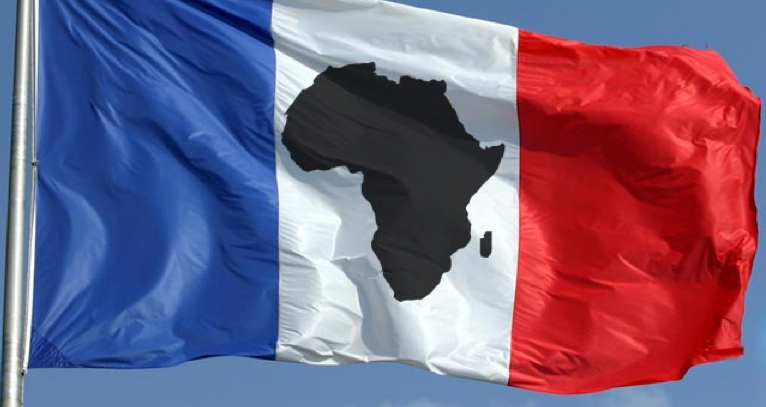Created in 1994 and operational in 1999, the Central African Economic and Monetary Community, popularly known by its French acronym, CEMAC, is an economic community made up of six central African states. Cameroon, Gabon, Central African Republic (CAR), Chad, the Republic of Congo and Equatorial Guinea. With the increasing need of fostering regional economic cooperation on the African continent in the 1990s, these countries decided to come together, hence the birth of CEMAC as a replacement to the largely neglected customs union, Union Douanière des Etats de l’Afrique Centrale (UDEAC) which was established after independence. In essence, CEMAC was to improve and make up for the shortcomings of the Customs Union.
The promotion of trade and institution of a common market are the most important among its objectives. In 1994, it [CEMAC] succeeded in reducing quota restrictions and tariffs among member states. Currently, CEMAC countries share a common financial, regulatory, and legal structure, and as well maintain a common external tariff on imports from non-CEMAC countries. A common currency (the Franc CFA), monetary policy and the adoption of a common convergence (Banking sector integration) criteria for the monetary union, is expected to facilitate the process of financial integration. Banking sector integration is a process of convergence into a single market for banking products and services, where all buyers and sellers within CEMAC have the opportunity to do business in the most favorable terms. In theory, tariffs have been eliminated within CEMAC but full implementation of this has not come through.
According to the experts, Jacques Landry Bikaï and Moustapha Mbohou Mama – respectively head of the analysis and modeling of economies at the research department, and head of the monitoring and analysis of the financial system in the credit and markets management capital and banking supervision at the Bank of Central African States (BEAC) – bank intermediation in the countries of the Central African Economic and Monetary Community (CEMAC) remains insufficient despite the continued growth in credit to the economy. This growth in credit to the economy however is low when compared with those of emerging or developed countries.
In 2016, the ratio of bank credits to the non-financial private sector on Gross Domestic Product (GDP), which reflects the financial depth, was on average less than 20% in the sub-region. This deepening inadequacy of credit supply of bank resources, according to the two experts, reflects the overall difficulty in mobilizing long-term savings to finance investment in the CEMAC.
BEAC reveals that, in 2014 the spending carried out by these six countries was estimated at FCFA 7,000 billion, whereas, in 2017 at its maximum spending is estimated at only FCFA 3, 000 billion, showing a remarkable reduction. This drastic reduction in public spending in the CEMAC zone (up to FCFA 4,000 billion in total), as analyzed by the central bank, is the result of budgetary adjustment measures implemented in the States, or ordered by BEAC, since the onset of the persistent decline commodity prices – a difficult economic situation which deprives the CEMAC States from important revenues. This austerity measure was meant to prevent injecting more liquidity in the economic system of the States, to avoid digging further into the foreign currency reserves, which have greatly dropped since 2015. At the local level, through various mechanisms of budgetary adjustment, the CEMAC States have considerably reduced their expenditure. In Cameroon, regularly referred to as the “engine” of CEMAC, the government announced in a press conference, in July 2017, that the reforms, when implemented will lead to “a reduction of FCFA100 billion in the operating expenditure” planned for the 2017 budget.
Credit institutions, which are often insufficiently equipped to efficiently examine the reliability of projects, do not usually have specialized services dedicated to specific clients (SMEs, SMEs, agricultural operators among others), a state of affairs which does not favor capitalizing the expertise of banks and expanding their commitments to operators with special profiles. In terms of credit demand, there are major constraints to the development of bank financing of economies in the CEMAC. These include: the unsatisfactory quality of credit files, the prohibitive cost of bank credit, conditions for access to credit, financial illiteracy and the huge informal sector (estimated at over 70% of average jobs and about 40% of average GDP in sub-regional economies).
According to Jacques Landry Bikaï and Moustapha Mbohou Mama, these reforms carried out so far by the CEMAC countries have not been enough to improve the ease of doing business and the image of the region with domestic and foreign investors. According to the World Bank’s “Ease of Doing Business” ranking in 2015, CEMAC countries are all ranked beyond the 143rd place. Lest we forget that 189 countries are included in the ranking. Apart from weaknesses in the business environment, which constitute a major constraint to the development of credit supply, the slowness and complexity of judicial proceedings also contribute to weakening the business environment.
Analysis
Despite significant progress over the period 2010-2014, notably due to the increase in the minimum social capital of banks and financial institutions, the banking system of the zone remains marked by the weakness of its permanent resources. This has several effects on the economies of this Zone. With a keen focus on Cameroon, a reduction in public expenditure through bank/credit interventions will lead to the following:
A fall in aggregate demand, which will translate to lower economic growth and lower inflation. Nevertheless, cuts in government spending, proceeded by an expansionary monetary policy – specifically lowering interest rates – would boost aggregate demand and mitigate the effects of government spending cuts.
Secondly, this cut in government spending will lead to a reduction in growth (fall in GDP) given that the Cameroon’s economy at present is facing financial difficulties. However, if private sector investments and employment increase, it will lead to increase consumer spending, increased production hence exports. This, if maintained would witness a bounce back of the economy in the short term.
Equally, this cut in government spending in Cameroon will reduce annual government borrowing and help drive down the total public sector debt, which has been on the rise in the past years. This will only happen if such cuts are tailored towards public debt servicing however, if this cut in government spending does cause a further economic downturn (for example, increased interest rates, reduction in aggregate demand, increased taxes) the improvement in finances will be limited.
Among other measures taken for the optimal development of the credit market and the promotion of transparency and competition, the CEMAC institutions have initiated other reforms. Such include the introduction of regulations on the publication of the total effective rates (TEG) of bank conditions. BEAC has also put forward a series of measures aimed at both reinvigorating the inter-bank market and providing reliable financial information on borrowers through the central balance sheet, the payment incident center and credit bureaus.
These actions, the two experts concluded, cannot by themselves boost credit to the economy without the support of the States. Especially action aimed at improving the business environment.
***
References
Brice R. M.2017. Between 2014 and 2017, the six CEMAC countries cut down public expenditure by FCfa 4,000 billion. Business in Cameroon. Accessed 5th September 2017.
Camerpost, 2017. Cameroun : L’intermédiation bancaire demeure insuffisante en zone CEMAC selon les experts. Available at: https://actucameroun.com. Accessed 5th September 2017
A leading African think tank with a mission to provide independent, in-depth and insightful policy recommendations that allows all Africans to prosper in free, fair, democratic and sustainable economies.




Leave A Comment